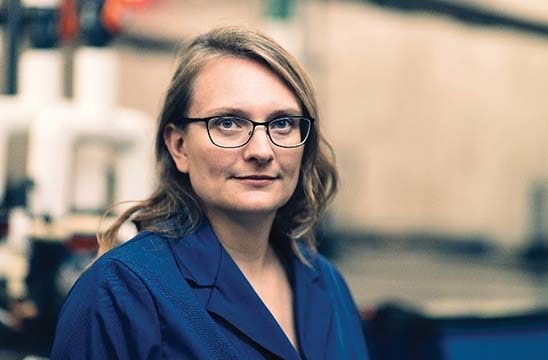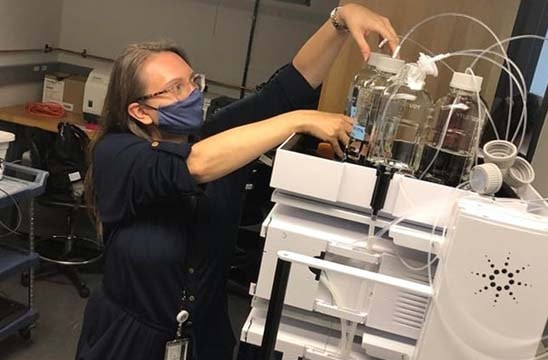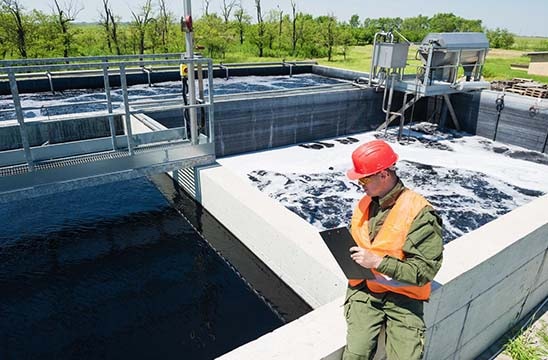What if predicting where and when a COVID-19 outbreak would occur were possible?
Not just project the virus' trajectory but forecast where and when to expect a wave of positive cases.

"And I have no complaints. This instrument feels brand new to me, and the service and warranty are excellent. No regrets on our part."
- Denina Simmons
That's exactly what Denina Simmons is researching at Ontario Tech University in Canada.
The assistant professor of biology analyzed wastewater samples from across the Durham region in Ontario for traces of SARS-CoV2 in an effort to determine if the virus that causes COVID-19 is detectable and could possibly predict COVID spikes in the population. Early results from her work showed a spike in the virus' presence in wastewater approximately 10 days before an identical spike in positive cases was reported in the region.
"If this can be proven, you can sort of think of it like an early warning signal," Denina said of the testing protocol, which uses an Agilent liquid chromatography quadrupole time-of-flight mass spectrometer (LC/Q-TOF MS) to measure the abundance proteins that indicate SARS-CoV2 presence in a research setting.
It's not exactly what Denina had in mind when her department purchased the instrument in late 2019. She had planned on using it to measure levels of environmental contaminants in fish proteins and metabolites — and she almost didn't get to. A new instrument just wasn't in the university's budget.
But Agilent's certified pre-owned instrument (CPO) program made the purchase possible. The program, which buys back older instruments from laboratories upgrading their equipment and refurbishes them for resale, has been beneficial in providing a wider array of options for customers. The advantages also include enhanced product stewardship and being an environmentally conscious supplier.
Meanwhile, customers get a break on price without sacrificing quality or support. "It was completely about affordability," Denina said of the university's decision to purchase a pre-owned system. The university also purchased a certified pre-owned gas chromatography mass spectrometer (GC/MS) and has plans to use the program to buy a liquid chromatography triple quadruple mass spectrometer (LC/QQQ MS) in the future.
But when the instrument arrived, Denina was tasked with more than studying fish proteins. A member of Ontario Tech University's board of directors shared reports of wastewater analysis for SARS-CoV2 being done in Australia and suggested faculty researchers follow suit.

Photo: Courtesy of Denina Simmons.
Denina was quick to accept the challenge — and she put her own twist on it.
Research done up until that point had focused on measuring the presence of SARS-CoV2 ribonucleic acid (RNA) in wastewater.
"But I thought if you can measure RNA, you should be able to measure proteins because proteins are generally more abundant than RNA and more stable," Denina explained.

Her research began in September with the analysis of samples from wastewater treatment centers in five cities in Ontario: Ajax, Clarington, Pickering, Oshawa and Whitby.
After the samples are precipitated and centrifuged, the remaining semi-solid pallet is broken down into peptides, or small chains of amino acids. Denina then uses the LC Q-TOF MS to measure the mass of those peptides and their sequences, which she can then map to known sequences of genes and proteins — including those of the SARS-CoV2 virus.
It's cool, she said, because most researchers are just looking for SARS-CoV2 RNA or spike proteins, stick-like protrusions that bind the virus to human cells. This manner of testing increases the number of needles in the haystack, so to speak, while potentially giving public-health officials time to prepare for COVID-19 outbreaks in specific areas. But the benefits of wastewater analysis don't stop there.
"We're seeing one or two proteins that are human, not viral, that we think may be connected to infections, but further research is still needed" Denina said. It's an approach with the potential to extend beyond COVID-19, she added, suggesting that waste water could be scanned for other types of viruses.
"If this turns out to be successful, and if governments learn their lessons from this scenario, we might see a change in monitoring in the future," she said.
And it was all made possible, Denina said, by Agilent's CPO program. "The CPO program is the only reason that my team is able to do this work, as without it, we wouldn't have been able to purchase our Agilent (LC/Q-TOF MS) " she said. "And I have no complaints. This instrument feels brand new to me, and the service and warranty are excellent. No regrets on our part."
Related Resources:
- About Denina Simmons:
https://science.ontariotechu.ca/biological-science/people/denina-simmons.php
- Ontario Tech University
https://ontariotechu.ca/
- Agilent Certified pre-owned instrument program
https://www.agilent.com/en/products/certified-pre-owned-instruments